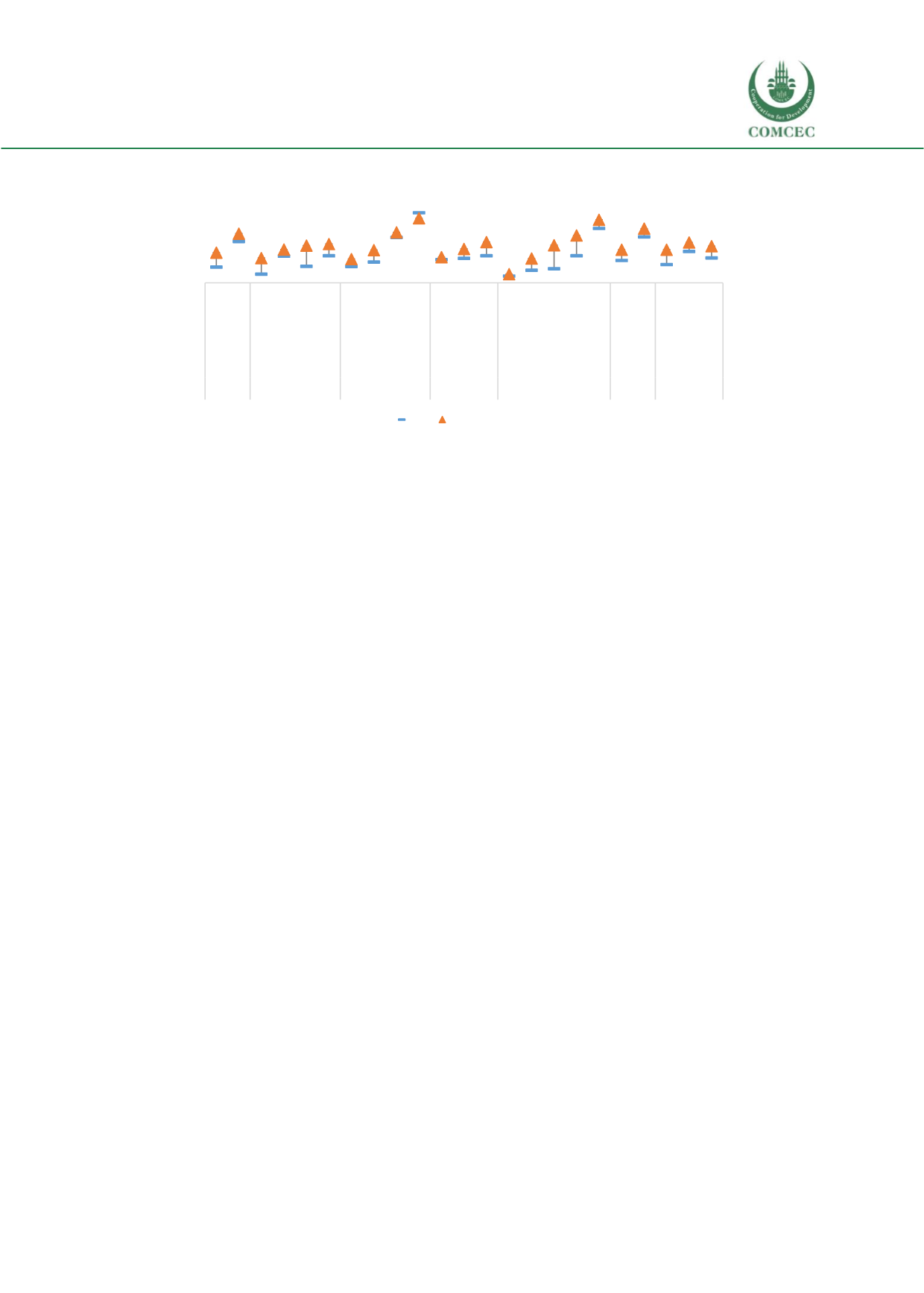

Education of Disadvantaged Children in OIC:
The Key to Escape from Poverty
259
D.
Finishing 8 years of education (16-18 year olds)
Note: Authors’ calculations using DHS 1990 and 2012
Probit regressions
The second analysis used in the report is the probit regression method. The effect of
circumstances on school attendance and finishing school for children is measured using probit
regression making use of the most recent DHS dataset and another DHS dataset from 10 years
ago or more for each country. These regressions show the degree of the effect of circumstances
and which circumstances continue to matter. The probit equation that was used is as follows:
( ) = (
′
)
The circumstance variables X that are used in the probit regression is the same as the variables
that are used in HOI. These are location of the household, region of the household,
ethnicity/language (when available), gender of the child, education level of the household head
and household wealth.
Probit Results
Regression results show that circumstances continue to have a large impact on education
indicators of children.
Especially wealth has the largest impact and there has been almost no
progress and in some cases even deterioration for the poorest. In contrast, Pakistan seems to be
successful in tackling the disadvantaged situation of girls in access to education while there is
still a long way to go to make gender a circumstance that has no impact on education
opportunities. In summary the results are as follows:
Living in rural areas does not have any significantly large marginal effect on education
indicators in Pakistan.
There are regional disparities and Sindh and Balochistan are the regions that affect the
education opportunities the most negatively.
Being a girl still decreases the chances of going to school and finishing school but its
negative impact decreased throughout the years.
Poor children and children whose household head has no education continues to decrease
the likelihood of attending school or finishing school in very large degrees. The
0
10
20
30
40
50
60
70
80
90
100
Rural
Urban
Balochistan
Sindh
Khyber…
Punjab
No education
Primary education
Secondary…
Higher Education
5 or more children
3-4 children
1-2 children
Quint 1 (Poorest)
Quint 2
Quint 3
Quint 4
Quint 5 (Richest)
Non-Urdu
Urdu
Female
Male
TOTAL
finishing 8 years of education (% of 16-18
year olds)
1990 2012
















